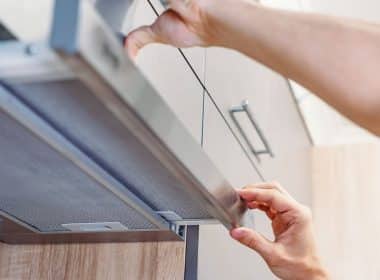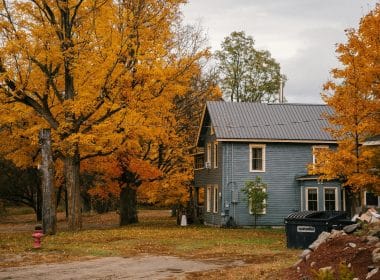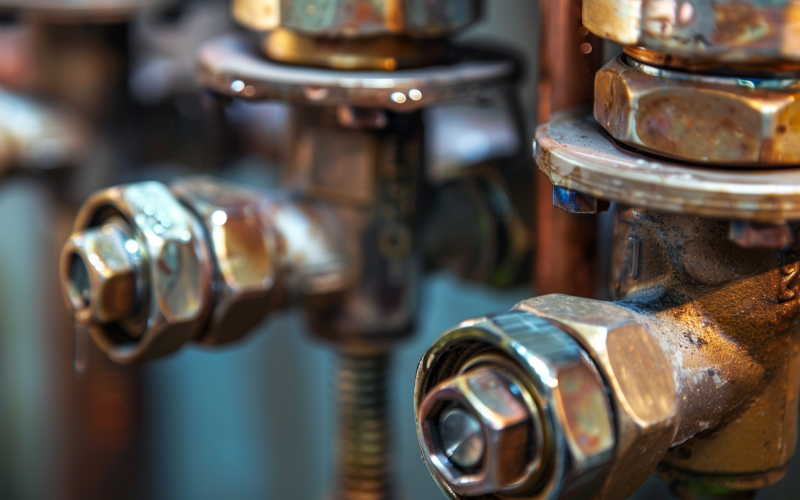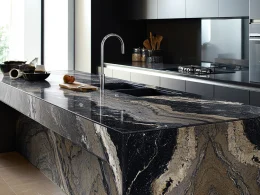In the realm of interior design, homeowners continually seek innovative flooring solutions. They desire options that blend aesthetics, durability, and cost-effectiveness.
One such option gaining significant attention, particularly for high-traffic areas like kitchens, is luxury vinyl flooring (LVF). This article aims to examine LVF’s suitability for kitchen environments thoroughly.
We will explore its benefits, potential drawbacks, and how it compares to alternative flooring options.
Understanding Luxury Vinyl Flooring
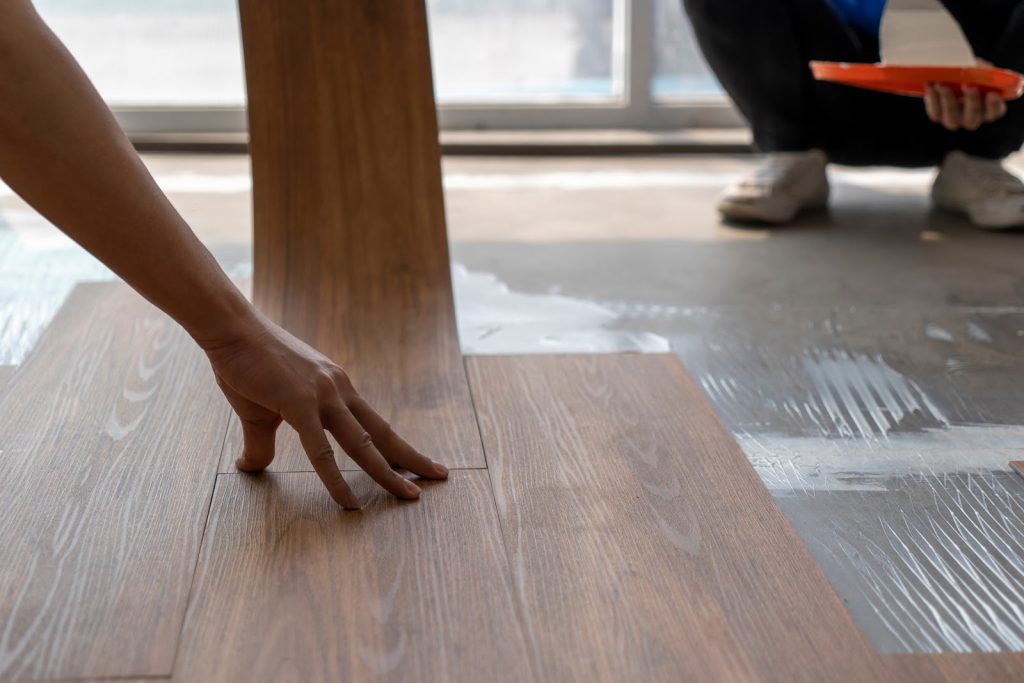
Luxury vinyl flooring, also known as luxury vinyl tile (LVT) or luxury vinyl plank (LVP), is a sophisticated synthetic flooring option.
It is engineered to emulate the appearance of natural materials such as hardwood or stone. Unlike traditional vinyl, LVF boasts enhanced thickness, superior durability, and a more authentic aesthetic. Its construction typically comprises multiple layers. These include a protective wear layer, a high-definition design layer, a robust core layer, and a stable backing layer.
The growing popularity of LVF is evident in market trends. Industry reports indicate significant growth in the global luxury vinyl tile market.
Valued at approximately $25.61 billion in 2021, it is projected to reach $40.78 billion by 2028. This represents a compound annual growth rate of 6.8%. Such substantial growth underscores the increasing acceptance and demand for LVF in various applications, including residential kitchens.
Advantages of Luxury Vinyl Flooring in Kitchen Environments
- Water Resistance: Perhaps the most compelling argument for using LVF in kitchens is its exceptional water resistance. The majority of luxury vinyl products are engineered to be completely waterproof. This makes them ideally suited for areas prone to spills and moisture.
- Durability: LVF is renowned for its resilience. Many products feature wear layers capable of withstanding the rigours of heavy foot traffic. They can also endure dropped kitchenware and frequent chair movement.
- Ease of Maintenance: One of the most appealing aspects of LVF for busy homeowners is its low maintenance requirements. Regular sweeping and occasional mopping are typically sufficient to maintain its appearance. Unlike natural stone or hardwood flooring, LVF does not require specialized cleaning products or periodic sealing.
- Comfort Underfoot: In comparison to harder surfaces like ceramic tile or natural stone, LVF offers enhanced comfort underfoot. This can be a significant advantage for individuals who spend extended periods in the kitchen. It potentially reduces fatigue and discomfort during long cooking sessions or cleanup.
- Design Versatility: Advancements in printing technology have allowed LVF to convincingly replicate a wide array of natural materials. Options range from rustic wood grains to elegant marble patterns. This versatility allows homeowners to achieve the look of premium materials without the associated cost or maintenance requirements.
- Cost-Effectiveness: While prices can vary depending on quality and brand, LVF is generally more affordable than the natural materials it imitates. The average cost ranges from $2 to $7 per square foot, excluding installation. This presents a cost-effective alternative to high-end hardwood or natural stone options.
Comparative Analysis
To better understand how LVF performs in kitchen environments, it’s helpful to compare it with other popular flooring options:
|
Feature |
Luxury Vinyl Flooring |
Hardwood |
Ceramic Tile |
|
Water Resistance |
Excellent |
Poor to Fair |
Excellent |
|
Durability |
Good to Excellent |
Good |
Excellent |
|
Comfort Underfoot |
Good |
Good |
Poor |
|
Maintenance |
Easy |
Moderate |
Easy |
|
Cost (per sq ft) |
$2 — $7 |
$6 — $12 |
$5 – $10 |
|
Lifespan |
10–20 years |
50–100 years |
50+ years |
This comparison illustrates that while LVF may not match the longevity of hardwood or ceramic tile, it offers a balanced combination of features. These features make it well-suited for kitchen environments.
Considerations and Potential Drawbacks
- Environmental Impact: It is important to acknowledge that most LVF products are manufactured using polyvinyl chloride (PVC), a non-biodegradable plastic. Some manufacturers are exploring more environmentally friendly alternatives. However, the ecological impact of LVF remains a concern for environmentally conscious consumers.
- Potential for Fading: Although many LVF products incorporate UV-resistant layers, prolonged exposure to direct sunlight may lead to fading over time. This is a factor worth considering, particularly in kitchens that receive abundant natural light.
- Limited Lifespan: While LVF is durable, it typically does not match the longevity of some traditional flooring options. High-quality LVF has an average lifespan of 10-20 years. This is respectable but falls short of the 50-100 year lifespan associated with well-maintained hardwood floors.
- Impact on Property Value: Some real estate professionals argue that LVF may not contribute as significantly to a home’s value as natural materials like hardwood or stone. This could be a consideration for homeowners planning to sell their property in the near future.
Installation Considerations

The performance and longevity of LVF in kitchen settings are heavily dependent on proper installation. Two primary installation methods are commonly employed: the click-lock system and the glue-down method.
The growing acceptance of LVF in kitchen remodels is evident from industry surveys. The average cost to install vinyl flooring is between $2.50 and $13 per square foot with labour.
Types of Luxury Vinyl Flooring
When selecting LVF for kitchen use, it’s important to understand the different types available:
|
LVF Type |
Thickness |
Wear Layer |
Best For |
|
Standard LVP |
2-3 mm |
6-12 mil |
Light to moderate traffic |
|
Premium LVP |
4-6 mm |
12-20 mil |
Heavy traffic, commercial use |
|
SPC (Stone Plastic Composite) |
4-7 mm |
12-22 mil |
Areas with temperature fluctuations |
|
WPC (Wood Plastic Composite) |
5-8 mm |
12-20 mil |
Comfort, sound insulation |
This table highlights the variety of LVF options available, each suited to different needs and environments. For kitchens, which often experience heavy traffic and occasional spills, Premium LVP or SPC might be the most suitable choices.
Performance in Kitchen Environments
Kitchens present unique challenges for flooring materials. These include frequent spills, temperature fluctuations, and heavy foot traffic. LVF generally performs admirably under these conditions:
- Spill Resistance: The waterproof nature of most LVF products allows for easy cleanup of spills without causing damage. This is true provided they are addressed promptly.
- Temperature Stability: Unlike some natural materials, LVF exhibits minimal expansion or contraction with temperature changes. This reduces the risk of gaps or buckling.
- Impact Resistance: While not impervious to damage, high-quality LVF demonstrates good resistance to the occasional dropped kitchenware. It often outperforms some softer flooring options in this regard.
Conclusion
Luxury vinyl flooring presents a compelling option for kitchen environments. It offers a balanced combination of aesthetic appeal, durability, and practicality. Its water resistance, ease of maintenance, and underfoot comfort make it particularly well-suited to the demands of a busy kitchen. However, like any flooring option, it comes with its own set of considerations. These include environmental concerns and a potentially shorter lifespan compared to some traditional materials.
The decision to install LVF in a kitchen should be based on a careful evaluation of individual needs, budget constraints, and long-term plans for the home. With proper consideration of its advantages and limitations, and meticulous installation, luxury vinyl flooring can provide an attractive, functional, and cost-effective solution for many kitchen spaces.

